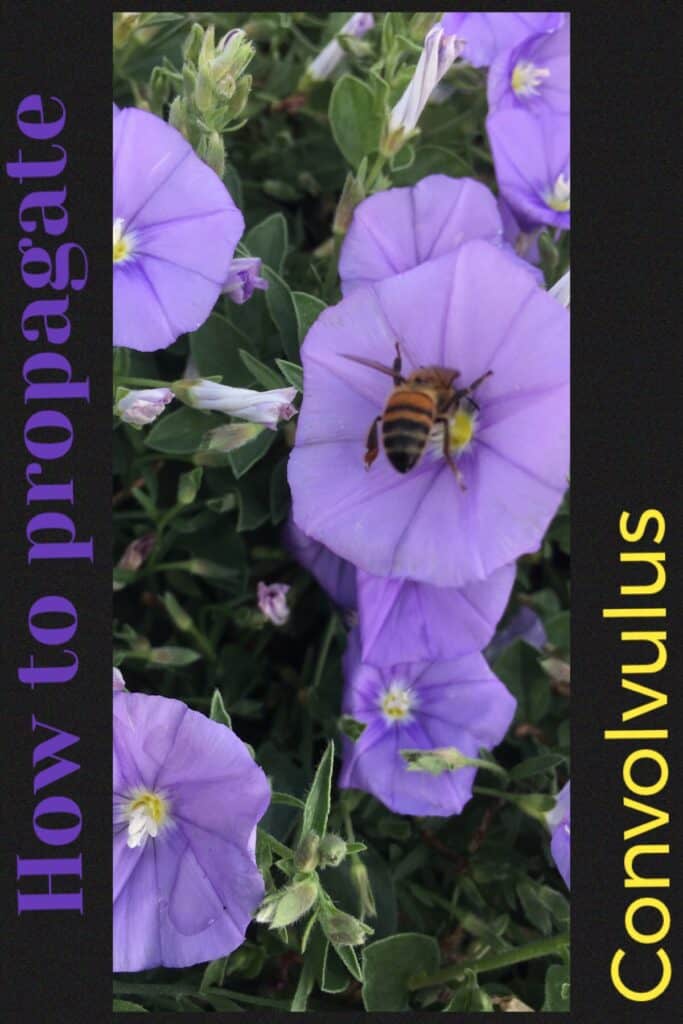
How to propagate Convolvulus Sabatius
We propagate convolvulus sabatius using cuttings. These are a very easy plant to do via cuttings. Within 3 months our cuttings were ready for the garden.
Gather cuttings
Select strong healthy plants to take cuttings from. A cutting is effectively a clone of the mother plant. These cuttings were taken at the beginning of April (start of autumn here in Australia). We find these will strike anytime of year, however during the warmer months is when you’ll get the fastest results.
Once you’ve found a nice health plant, cut off some of the long trailing stems. You can use the tip or the base, we use the whole length of the stem provided it has nice healthy foliage.
The bottom of the cutting should be cut just below a leaf, this is where a node is. Generally the roots will sprout from this node. The cutting should be approximately 2-3″ (5-7 cm) long. Strip the foliage from the bottom half of the cutting as shown in the pictures.
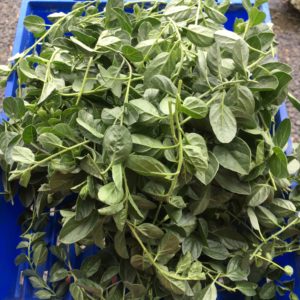
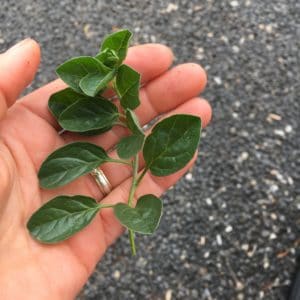
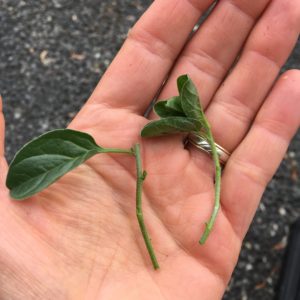
Striking roots
To strike roots on the cuttings we use our specially mixed perlite and peat moss mix. This is a blend we make ourselves. It’s 90% perlite 10% peat moss. Both have exceptional moisture retention capabilities. And create a sterile healthy environment in which to grow your new plants.
We plug the cuttings into this mix, using a bamboo skewer to create a small hole. Because the cuttings are very soft they cannot be pushed straight into the mix. Before plugging the cuttings water the mix, this firms up the mix and keeps the hole from collapsing.
Once you’ve finished, water the cuttings well, until water passes through. Now store in a sheltered position that is well lit but out of direct sunlight. Direct sunlight and wind will quickly dry out the cuttings. While waiting for the roots to strike keep the perlite peat moss moist but not wet. Waterlogged cuttings will rot or get attacked by fungus.
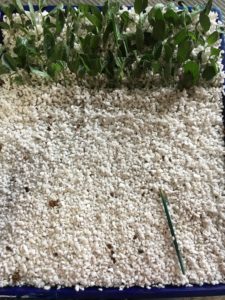
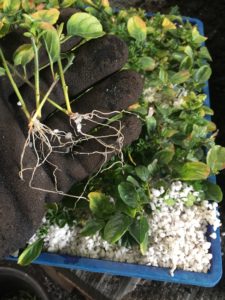
Potting the cuttings
It took 2 months for the roots to strike in the perlite peat moss mix. Once there are roots, the cuttings can be potted. We use 2″ (5cm) tubes to pot ours. These take up very little room and provide an adequate root ball.
Be very careful removing the rooted cuttings from the perlite peat moss mix, convolvulus roots break very easily. We like to lever them out with a bamboo skewer.
To pot, use a good quality potting mix. Once potted give a thorough soaking. We use seasol, which is a seaweed based fertiliser. It provides some quick nutrients and helps to promote strong root growth. After the cuttings have been watered store back in a position that’s well lit and sheltered.
It should only take about one month after potting into potting mix for the plants to have a reasonable root system. Before you plant them out in the garden it’s a good idea to let them harden off a bit. This means allowing them to adjust to the elements ie. wind, sun, rain etc. This doesn’t need to be done for long, 2 weeks is sufficient.
Now you can plant your brand new plants into the garden or share with friends.
Below is a short video, if you prefer a more visual experience. We hope this was helpful. If you enjoy our content feel free to subscribe. Thanks
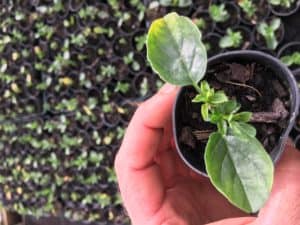
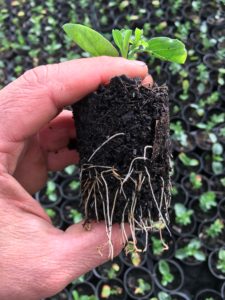
Propagation Kit
We have also put together a resource page that contains links to the products we use or similar. If you want to check that out click the link.
How to propagate convolvulus sabatius video
CLICK HERE TO SEE OTHER PLANTS WE PROPAGATE
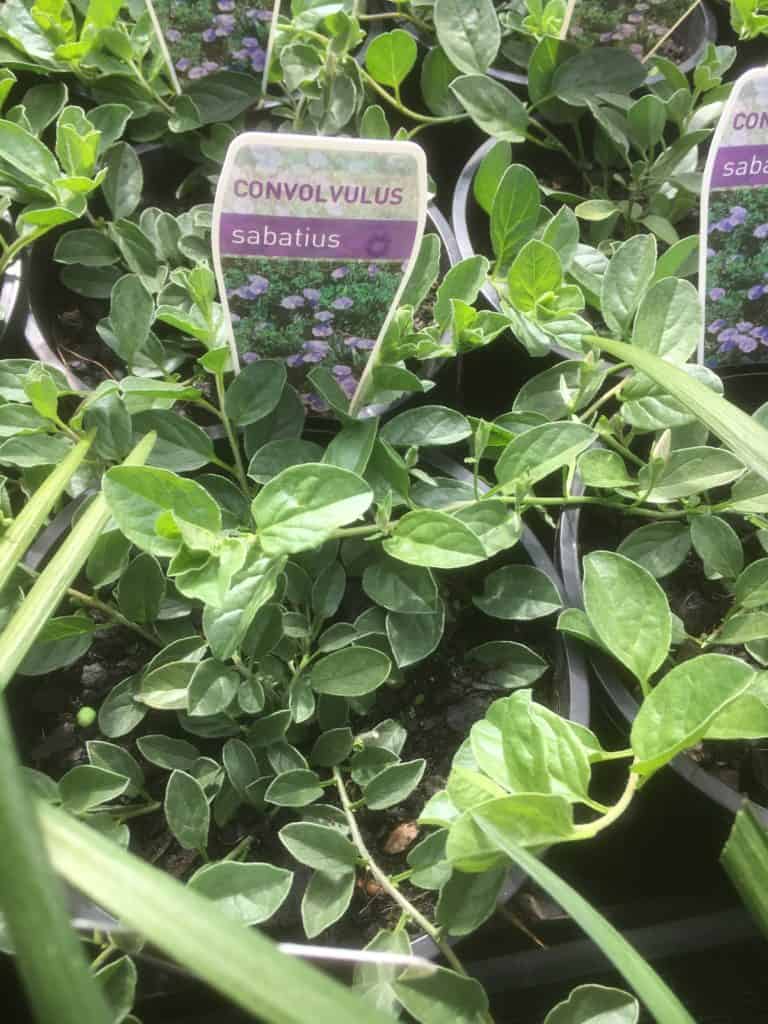
Convolvulus sabatius information & care
Convolvulus sabatius (syn. C.mauritanicus) is a trailing perennial plant. It has thin stems with small leaves. During the warmer months it’s covered in masses of lilac trumpet shaped flowers.
A great choice for hanging baskets, spilling over retaining walls or as a ground cover.
Best grown in full sun. Prefers moist well drained soil, but will tolerate a wide variety of soil types. To encourage a bushier plant prune back after flowering.
Cultural notes
Botanical name: Convolvulus sabatius (Syn C.mauritanicus)
Common name:Bindweed
Family: Convulvulaceae
Native to: Southern Europe & North Africa
Flowers: Spring-Autumn
Position: Full sun
Height: 10cm
Width: 100cm
